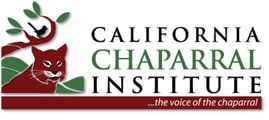Protecting the Los Padres From the US Forest Service
US FOREST SERVICE AGREES TO WITHDRAW RIDGELINE CLEARANCE PROJECT
THAT THREATENED FRAGILE HABITAT IN SANTA BARBARA COUNTY
April 3, 2017
Santa Barbara, Calif. – Today, two conservation organizations and the US Forest Service agreed to drop pending legal action in U.S. District Court concerning a controversial clearance project after the Los Padres National Forest withdrew the project’s approval. The conservation groups filed the lawsuit to protect fragile habitat and rare species in the path of a remote fuel break along the Gaviota Coast and to encourage a greater focus on reducing fire risk where it matters most, directly in and around communities.
The Gaviota Fuel Break would have clear-cut native chaparral habitat across a six-mile-long, 300-foot-wide swath (the length of a football field) between Refugio Pass and Gaviota Peak, along the crest of the Santa Ynez Mountains. The site – located far away from any structures – lies at the heart of the Gaviota Coast, one of the crown jewels of Santa Barbara County.
“We are extremely grateful the Los Padres National Forest reconsidered this project,” said Richard Halsey, Director of the California Chaparral Institute. “We’re hopeful this decision signals greater collaboration with the both fire scientists and conservationists so all of us can develop effective plans to reduce fire risk to protect people and nature.”
The key species at risk is the beautiful Refugio manzanita (Arctostaphylos refugioensis). Considered “endangered” by the California Native Plant Society, the classic icon of the chaparral only grows in a narrow ridgeline band between Point Conception and Santa Ynez Peak along the coast of Santa Barbara County – exactly where the Gaviota Fuel Break was scheduled to run.
Here is a copy of our lawsuit/complaint.
You can also download the original press release when we filed the lawsuit.
Here is our comment letter on the project.
The US Forest Service's response to comments.
The US Forest Service's project description and Decision Memo.
The US Forest Service's March 21, 2017 decision to remove the fuel break from their planned project.
Please see our page on "Fuel" Treatments for additional information on the science.
The Gaviota Fuel Break would have clear-cut native chaparral habitat across a six-mile-long, 300-foot-wide swath (the length of a football field) between Refugio Pass and Gaviota Peak, along the crest of the Santa Ynez Mountains. The site – located far away from any structures – lies at the heart of the Gaviota Coast, one of the crown jewels of Santa Barbara County.
“We are extremely grateful the Los Padres National Forest reconsidered this project,” said Richard Halsey, Director of the California Chaparral Institute. “We’re hopeful this decision signals greater collaboration with the both fire scientists and conservationists so all of us can develop effective plans to reduce fire risk to protect people and nature.”
The key species at risk is the beautiful Refugio manzanita (Arctostaphylos refugioensis). Considered “endangered” by the California Native Plant Society, the classic icon of the chaparral only grows in a narrow ridgeline band between Point Conception and Santa Ynez Peak along the coast of Santa Barbara County – exactly where the Gaviota Fuel Break was scheduled to run.
Here is a copy of our lawsuit/complaint.
You can also download the original press release when we filed the lawsuit.
Here is our comment letter on the project.
The US Forest Service's response to comments.
The US Forest Service's project description and Decision Memo.
The US Forest Service's March 21, 2017 decision to remove the fuel break from their planned project.
Please see our page on "Fuel" Treatments for additional information on the science.
What was at stake, what we saved
Walking along the trail to Gaviota Peak. Imagine a scar 300 feet wide instead of a hiking trail.
The ridgeline looking east with the Pacific Ocean in the background.
A legacy Refugio manzanita nearly a century old. This old-growth stand of chaparral was threatened by the clearance operation.
Refugio manzanita in bloom.
One of the beauties that calls the ridgeline home. The California Dogface butterfly.
The chaparral-covered ridgeline that was scheduled for clearance (looking east from Gaviota Peak).
The Thrasher depends on dense, chaparral shrubs to thrive.
The location of the canceled ridgeline clearance project.
